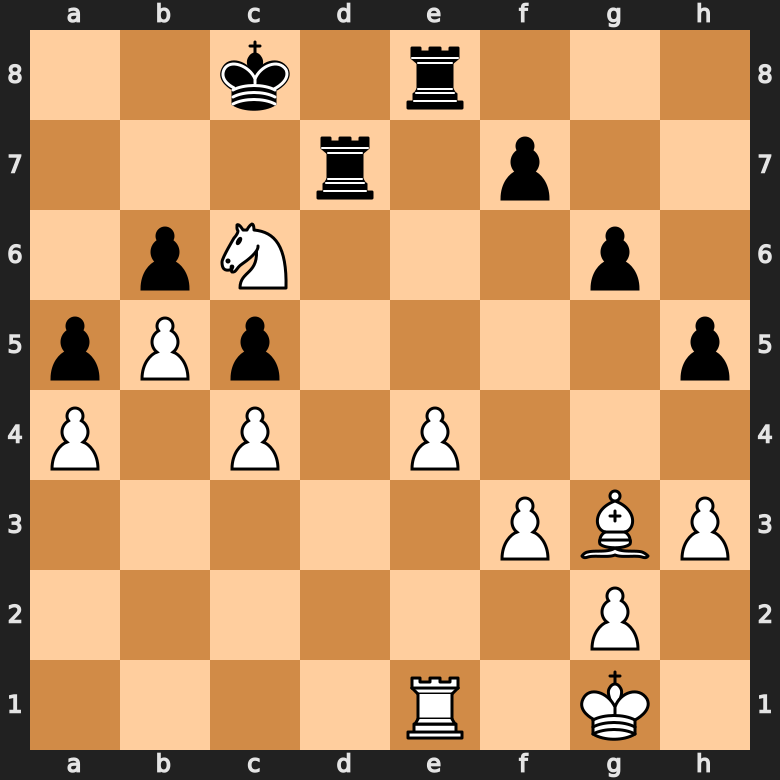Bishop or Knight: Which is Better?
A common question beginners often ask, is whether the bishop or the knight is better in chess. This is a totally fair and important question, as – especially in the opening – exchanges between knight and bishop are common. Often, the decision to engage in these exchanges is based on a gut feeling. But fear not: In this guide we’ll answer the question of whether the bishop or knight is the better piece.
Bishop vs. Knight – Value
Looking purely at the relative value of both pieces, we quickly learn why the question of “which piece is better?” is so commonly asked in regards to bishop vs. knight. Both pieces are generally valued at three pawns. So they should be equally strong on the board, right? 🤔 Well, as is often the case in chess, the answer isn’t quite that simple. The value of bishop vs. knight highly depends on the current position, as both pieces work best in totally different environments.
The Bishop is Better in Open Positions
It is no surprise that the bishop is excellent in more open positions, as it is clearly a long range piece. As long as there are no pieces in the way, the bishop can move (and attack) across the whole board. That makes the bishop the optimal piece for open positions, in which he has plenty of free diagonals to move on.
Open positions are characterized by having only a few pieces and pawns left on the board. Endgames are almost always open positions, hence the bishop is often superior in them as well.
A good example of such a position is the following:

As you can see, the board is quite empty, allowing the bishop to make full use of his long-range movement. Even though the material (by value) is equal in this case, white is clearly winning.
For the next move, White can easily start attacking black’s pawn on a6, freeing his own pawn towards promotion.
The Bishop on Open Diagonals
Even in rather closed positions, the bishop can be deadly; if there are long, open diagonals it can move along. One way to get a bishop into such a position is with a fianchetto. A fianchetto is a pattern in which the bishop is developed to the second rank, behind b- or g-pawns, as seen here:

Black’s bishop on g7 is very helpful in applying pressure on our knight on c3, even from a long way back.
The Knight Excels in Closed Positions
Closed positions are characterized by a heavily-locked pawn center and very little (if any) pawn exchanges. This is a very good example of a closed position:

The black bishop really has no way to escape his side of the board, as all of the black pawns are on light squares, blocking him. White’s knight, on the other hand, is much more agile and could even penetrate the enemy position once it moves to b4.
Knights on Outposts Are Very Strong
A term that is commonly used together with the knight is that of the outpost. An outpost is defined as a square fourth, fifth, sixth, or seventh rank, which is also protected by a pawn. For example:

The square c6 is an outpost, which is currently occupied by our knight. Realistically, the knight could never be pushed away from its outpost. Combine that with the strong influence it has over the enemy camp, and that knight is very, very valuable for us.
Knights on the edge of the board, or even worse, a corner, can be quite weak. “A knight on the rim is dim.”
Knights In Short Time Controls
Another environment where it can be beneficial to trade a bishop for a knight, is in short time controls; such as blitz or bullet games, or whenever your opponent is simply in time trouble.
That is because the knights movements are harder to calculate and predict than those of the bishop. Additionally, the danger of forks is greater during times of time trouble, as the knight can be quite a sneaky piece and hard to disable.
Bishop Pair vs. Knight Pair
Another interesting tangent to the debate of bishop vs. knight is, whether a bishop pair is stronger than a knight pair. While chess players and engines mostly agree that a bishop pair is superior to a knight and bishop, against a knight pair, the answer is answer is less clear and depends more on personal preference. If you’re handy with the bishop pair, you might prefer that over two knights.
Checkmating with Knight Pair/Bishop Pair
One aspect where there is a clear winner, is when looking at delivering checkmate with a bishop pair vs. a knight pair. Let’s examine forced checkmates against a lone king, whenever we have either a bishop pair or a knight pair alongside our own king.
For a bishop pair, it is possible to force a checkmate. You can see an example of a checkmate with a bishop pair here:

On the other hand, it is impossible to force a checkmate with a knight pair.
Ironically, sometimes forced checkmates are possible with knight pairs, when the opponent still has a few pawns left.
Bishop or Knight: Who Wins?
Well… it depends. There are countless points to consider when assessing the value of bishop and knight in any given position. Generally speaking, the bishop has a slight advantage in open positions or when it’s placed on long (and semi-open) diagonals. The knight usually excels in closed positions, where the bishop struggles to move around.
Read More About the Bishop
- How Much is Each Chess Piece Worth?
- Bishop or Knight: Which is Better?
- Which Chess Piece Moves Diagonally?
- Is a Queen Better Than a Rook and Bishop?
- How Does The Bishop Move In Chess?

